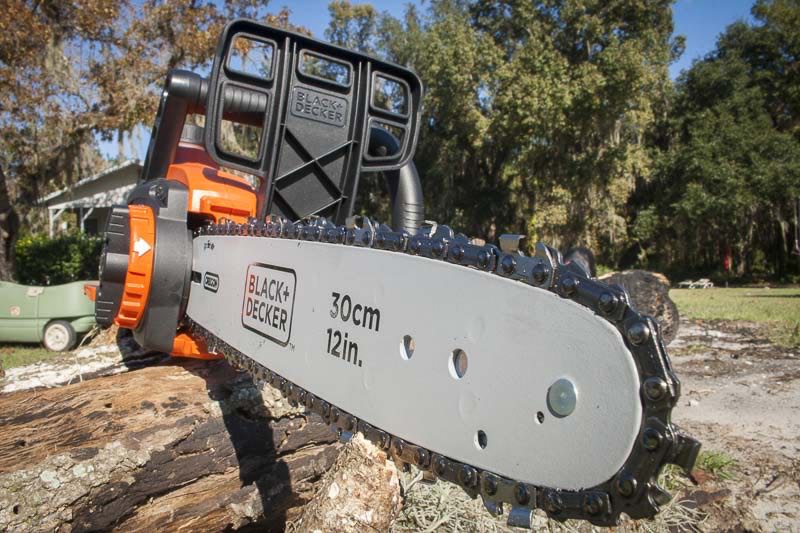We wrote this article as a helpful guide to anybody running a chainsaw. Indeed, chainsaw safety affects everyone from those beginning their career in the green industry to people with decades of experience. So whether you’re just starting out or you work on a logging crew, chainsaw safety matters. We put together a set of chainsaw safety tips to cover the basics and then some.
While we can’t hit every possible scenario, we do hope this article either jumpstarts you on your way or helps you reinvigorate some processes to ensure you operate a chainsaw safely. As a tool, a chainsaw should be respected. Do that, and you’ll have years of satisfying and productive work ahead of you.
Don’t forget to explore our Best Chainsaw Reviews list, as well as our guide to chainsaw basics!
Table of Contents
Preparation is Key
As with everything in life, preparation is important. While it’s always good to work with a partner, we recognize that’s not always possible. With that in mind, part of chainsaw safety involves making sure someone at least knows where you plan to work for the day. In the event of an emergency, you don’t want any delays. These days, everyone seems fairly well connected, so we’re far better off than when the nearest phone was miles away.
Know Your Equipment
Your chainsaw has several key features that keep you safe. Know them and you already have a leg up on key chainsaw safety tips.
A kickback guard and chain brake stops the chain in the event of a kickback. Kickback occurs when the saw bucks up suddenly toward your face. Nothing causes more immediate fear when using these tools.
These devices won’t work properly if you use the saw left-handed…so don’t. The chain catcher is a piece of metal at the base of the chain bar. It is designed to catch the chain in the event it breaks or derails from the chain bar. Additionally, the flat part of the handle extending underneath your right hand is there to further prevent injury in the event of a chain break.
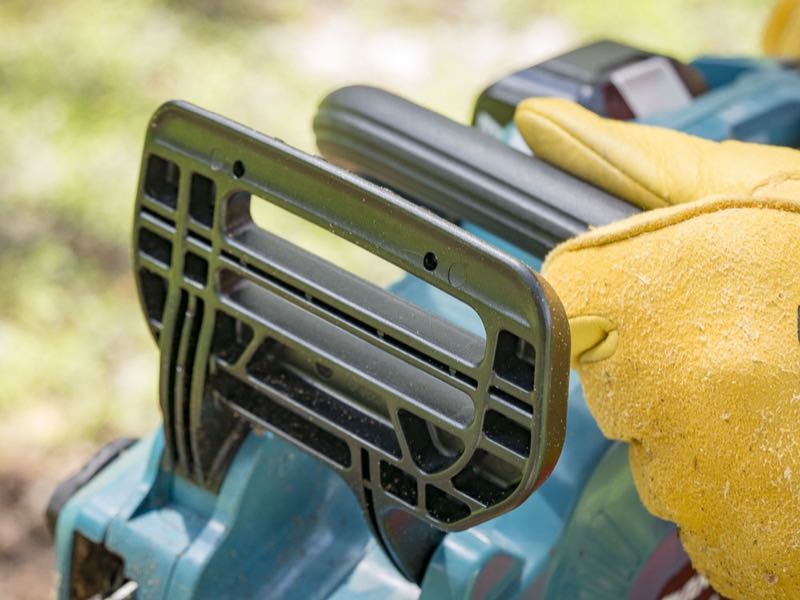
Have the Proper Equipment
Never use a chainsaw in flip-flops and shorts (you know who you are!) Proper equipment is essential to working safely with a chainsaw. Proper equipment includes a helmet, ear protection, and safety glasses.
You should also protect your legs with specially-made chaps. These chainsaw chaps are actually quite amazing. They protect by releasing thousands of tiny “threads” when cut. This immediately gums up the chain when it comes into contact with the chaps and stops it from spinning. It is the analog equivalent to a SawStop table saw for chainsaws.
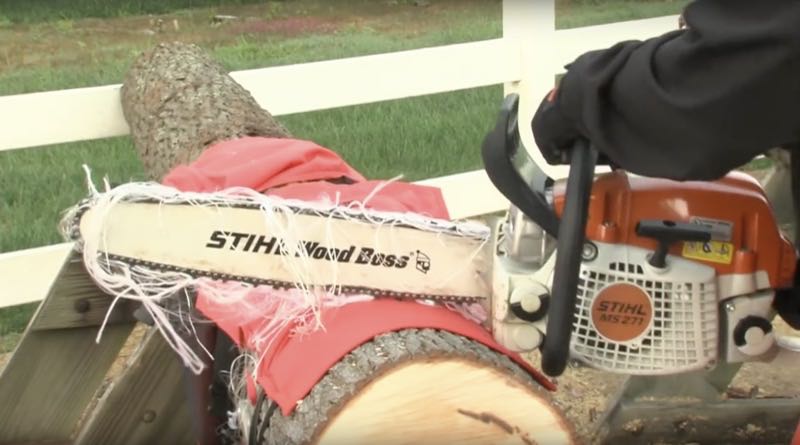
Finally, make sure you have good gloves and slip-resistant boots. You can suffer a major injury if your hands or feet slip while using a chainsaw. We experience this often when dealing with storm cleanup after a hurricane or tropical storm.
Some of the easiest chainsaw safety tips simply involve wearing the proper gear.
Chainsaw Safety Tips When Felling Trees
We cannot possibly include a full lesson on the chainsaw safety involved in felling trees, but you can keep a few things in mind. Above all, plan your felling. Make sure the tree falls in the proper direction and never underestimate the potential for variations in the angle or height of the tree.
You also want to check the tree for damage prior to cutting into it. There’s nothing more frightening than cutting into a tree only to experience barber chair where it splits unpredictably up the middle and kicks out (possibly toward you).
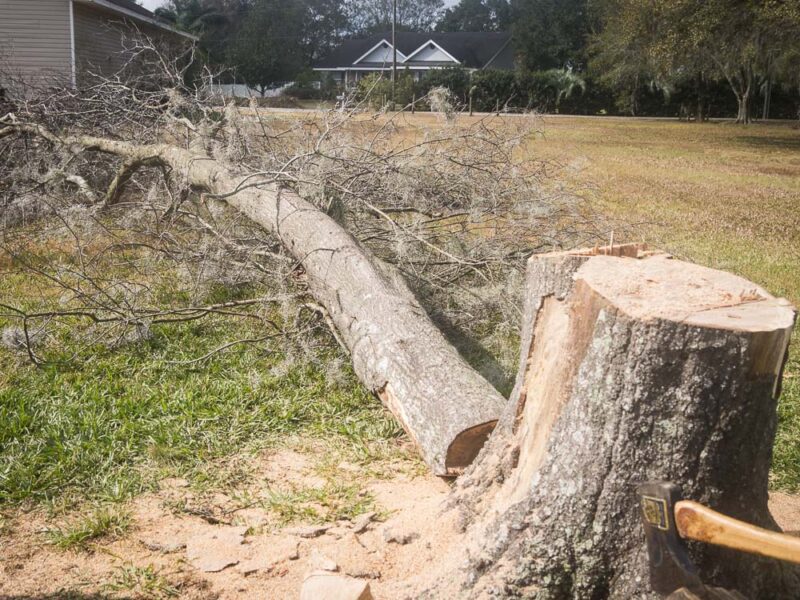
You also want to plan the entire job—including removal. Will there be any issues with removing the tree from the place you have it fall (ruts, streams, etc)? Are you “bucking” the natural order of things? A tree leaning heavily in one direction will not easily go the other. That takes experience and lots of planning. Take into account the weight and predisposition of the tree.
Post-Prep and Maintenance
You can’t just run a chainsaw forever without maintaining it. A dull and/or poorly-tensioned blade presents a danger to the operator. You must check your saw before and after every job to make sure the tool is in perfect operating order. Does it have enough chain oil? Is there a regularly scheduled maintenance plan for the tool? Chainsaw maintenance plays a huge role in safety.
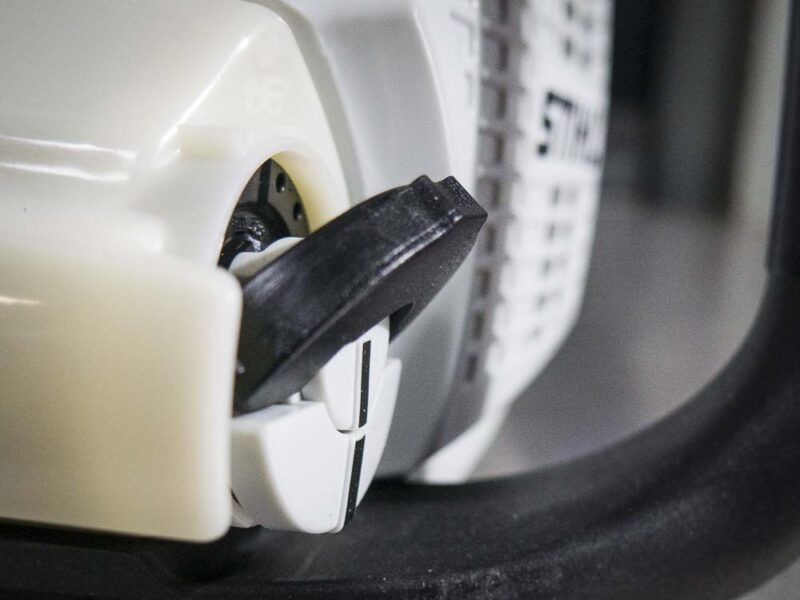
Final Thoughts
There is a lot more to consider, but for now, hopefully, these chainsaw safety tips give you a leg up…or help you keep a leg attached? Since both professionals and homeowners can benefit from using a chainsaw safely—and we hope everyone reading this learned at least something helpful.

